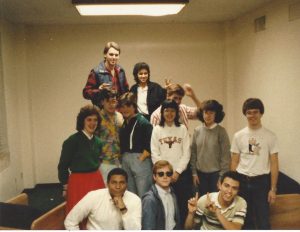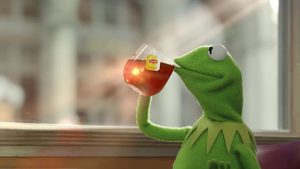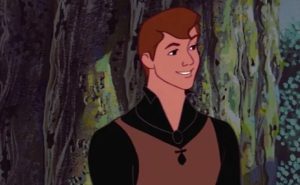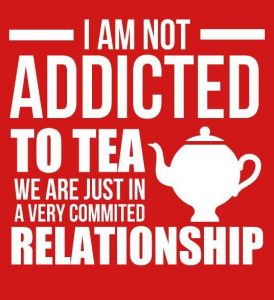Life
Memory Lane
This week I’ve been distracted by a jaunt down memory lane. One of my good friends from my college days died recently, and on the Facebook group for my college friends we’ve been sharing memories and photos of him, and that set off a big sharing of memories and photos, in general, as all of us have been digging out and scanning pictures from that time.
It’s funny, I thought I had really vivid memories of my college days, but some of these pictures are bringing up things I’d totally forgotten about. There are people I don’t recognize until someone mentions their names, and then memories flood back, or there are names that don’t ring a bell at all until I see them connected to a photo and then suddenly remember the people well. That’s meant I’ve been having a constant flood of nostalgia, and I’ve spent way too much time checking to see if anything new has been posted or digging through boxes of my own photos.
This friend was pretty much responsible for me having the college experience I had. I lived in a high-rise dorm on the honors floor, so basically it was geek central. It was a co-ed floor, with the girls on one wing and the boys on another. I moved in early because I had to do orientation, and I met someone else who’d also arrived early, and we hit it off, so I’d been hanging out with her and with some other people we’d met. I’d met some of the people on the floor when we had meetings, but I wasn’t really part of that group.
Then on Halloween, a Friday, I rushed home from class because I had to deliver something for my Pumpkin Pal (like a Secret Santa, but for Halloween), and in my rush I just threw my backpack on my bed and didn’t lock my door when I ran to deliver my gift. I got back to my room to find that my wallet was missing from my backpack. I went down to the dorm office to find the police there because there had already been multiple theft reports. This guy had apparently been working his way through the dorm. My friends came by while I was waiting to talk to the police, heading out to go do something, and instead of waiting with me until I made my report, they left. I was pretty devastated. I hadn’t lost much, since it was just the wallet I carried to class, so it only contained a few dollars, my student ID, and my driver’s license, but it still felt like a violation, and then to have my friends ditch me when I really needed support was even worse.
But a guy named Eric who lived on my floor saw me talking to the police and stopped to make sure I was okay. He then invited me to join the group that met in his room every afternoon to watch Star Trek before heading down to the cafeteria for dinner. That may have been the most comforting thing possible, since that had been my family’s routine when I was in high school. My parents worked at the school, so we got home together in the afternoon, and then we’d watch the Star Trek rerun before dinner.
That day, I got a whole new group of friends that I stuck with the rest of my time through school, and I’m still in touch with a lot of them now online. And it all happened because someone I barely knew reached out to me when I needed a friend. It turned out that most of the people in the group had been brought into it by Eric. He was essentially the one who made the group what it was.
One thing I find interesting about seeing those old photos is that the boys I thought were cute actually were. When I look at my crushes in my yearbooks from junior high and high school, I wonder what I was thinking, but most of the guys I had crushes on from college are still cute to me (their past selves are cute to current me. I don’t know what most of them look like now). There’s one that I didn’t remember at all until people started posting pictures, and now I think he was cute, but I don’t remember if I crushed on him then. There were a couple of pictures of him in my collection, but I don’t know if I was taking pictures of him because I liked him or because he was doing interesting things. Nothing happened with any of these guys because I was very much not cute then, and I was pretty awkward, even for the nerd floor.

Actually, looking at those pictures makes me want to go back in time and stage an intervention with my past self. For one thing, I’d tell myself to grow my hair out. I didn’t learn until later that my hair shouldn’t be worn short because it won’t have room to curl, so it just makes a frizzy cloud. Some of my fashion choices were questionable. Yes, it was the 80s, but the things I thought were great were weird even for the 80s. And I’d tell myself to be more open to possibilities. I was very set on a plan and didn’t want to deviate from it, even when other opportunities came up. I chose a major and stuck with it, but it turned out to be a bad fit for my personality, and I didn’t actually enjoy it. Meanwhile, other things had come up, but I didn’t take advantage of those opportunities because they didn’t fit with my major. I don’t know what other direction I should have gone, but I should have let myself be more open to exploring. There was no guidance counseling at my high school, so I didn’t know what was out there, and going to a large university, I should have let myself explore enough to find a better fit. I’d probably have ended up doing the same thing I’m doing now, since that was the real plan all along, but I might have been happier along the way.
That sounds like the plot of a paranormal women’s fiction book — the middle-aged woman having a mid-life crisis getting the chance to either relive her college days or travel in time and visit her college-age self. Most of the things like that, like Peggy Sue Got Married, seem to involve parents who choose not to change their lives because they still want to have the kids they had, but what if you haven’t had kids and wouldn’t miss the kids that would have been if you change your life? There’s the TV series Being Erica, in which the heroine goes back in time and relives certain key times in her life. She doesn’t actually change the past, but the changed perspective on the past changes the way she faces the present. But she’s in her early 30s, so it’s more chick lit than women’s fiction.
I may have to add this to my idea file. Like I need more things to write. In the meantime, I have a funeral to go to this weekend, and the bright side of that is that I’ll be seeing some old friends there.

 And that was when it occurred to me that none of these films were meant to be actual biopics within the Muppet universe. Instead, what we seemed to have was a repertory company made up of the Muppets, and in their first few movies they were playing fictionalized versions of themselves. It was like when they make a movie centered around a musical group or pop singer and it’s sort of supposed to be about them, but it’s not really. They’re playing themselves, though they’re really more characters with the same names who look like them, in a fictional story. That’s how Kermit could have met Piggy for the first time multiple times in different ways in different places. They started branching out and playing other characters with their version of A Christmas Carol.
And that was when it occurred to me that none of these films were meant to be actual biopics within the Muppet universe. Instead, what we seemed to have was a repertory company made up of the Muppets, and in their first few movies they were playing fictionalized versions of themselves. It was like when they make a movie centered around a musical group or pop singer and it’s sort of supposed to be about them, but it’s not really. They’re playing themselves, though they’re really more characters with the same names who look like them, in a fictional story. That’s how Kermit could have met Piggy for the first time multiple times in different ways in different places. They started branching out and playing other characters with their version of A Christmas Carol. Step two would be to develop her relationship with Phillip. It needs to be more than one meeting on that last day so that they aren’t both going “but I don’t want to marry the prince/princess because I’m in love with someone else I just met today.” Maybe they’ve been meeting up secretly over years, ever since he was old enough to go riding on his own. In the animated version, he’s four when she’s born, so when he’s 14 she’d be 10, and that means they’d have to start as friends. He’s a lonely kid who’s tired of being trained to be a prince and who doesn’t have any real friends, and she doesn’t know anyone other than her guardians. He runs into her while he’s riding in the woods and they talk. He teaches her swordfighting using sticks, maybe brings bows and arrows and teaches her archery. She’s kind of like a little sister. But then over the years as they get older, it gradually starts developing into something more. This could be shown in montage until not long before her 16th birthday, when something happens to make them see each other in a new light, and they realize they’ve fallen in love.
Step two would be to develop her relationship with Phillip. It needs to be more than one meeting on that last day so that they aren’t both going “but I don’t want to marry the prince/princess because I’m in love with someone else I just met today.” Maybe they’ve been meeting up secretly over years, ever since he was old enough to go riding on his own. In the animated version, he’s four when she’s born, so when he’s 14 she’d be 10, and that means they’d have to start as friends. He’s a lonely kid who’s tired of being trained to be a prince and who doesn’t have any real friends, and she doesn’t know anyone other than her guardians. He runs into her while he’s riding in the woods and they talk. He teaches her swordfighting using sticks, maybe brings bows and arrows and teaches her archery. She’s kind of like a little sister. But then over the years as they get older, it gradually starts developing into something more. This could be shown in montage until not long before her 16th birthday, when something happens to make them see each other in a new light, and they realize they’ve fallen in love.